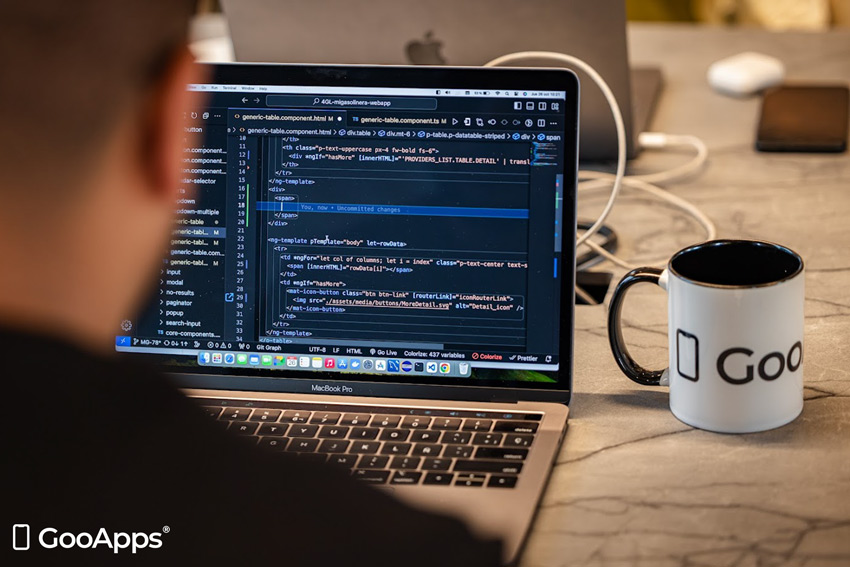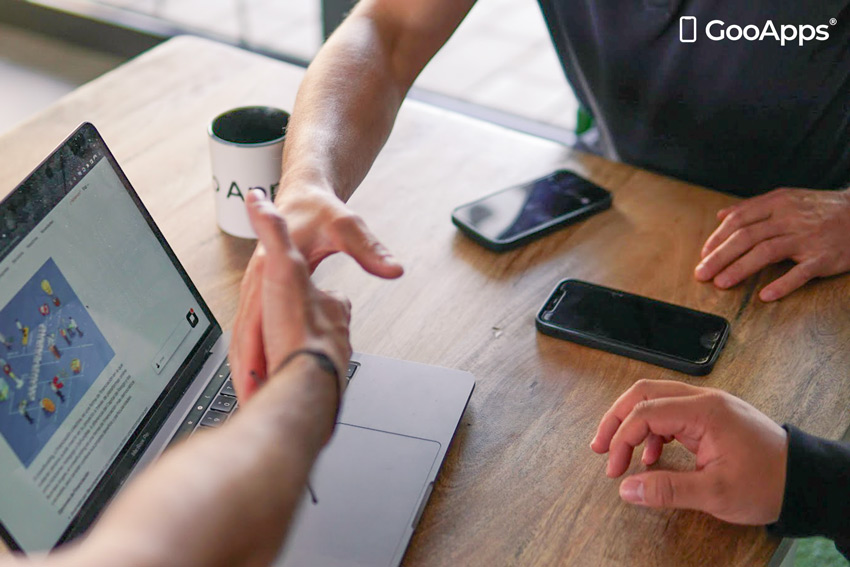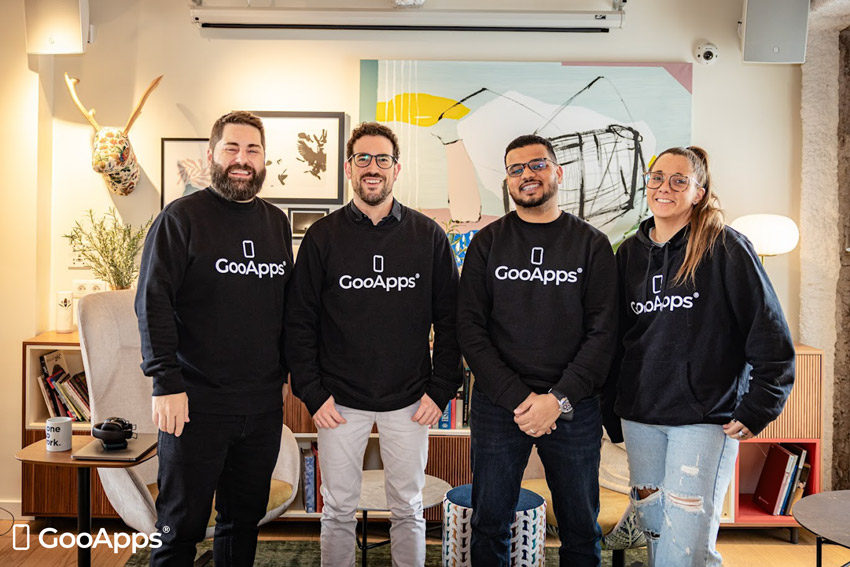
04/04/2024

Imagine for a moment that a mobile app begins to show issues. The urgency to solve them is clear, but a fundamental doubt arises: Do these problems fall under the app warranty, or are maintenance services needed? The line separating these concepts may seem blurred, and this is where many companies encounter challenges in understanding.
It’s essential to point out that, in the app development industry, not all companies provide a standard warranty due to regulations that exempt those who acquire services to integrate them into commercial or production processes from this consideration. However, at GooApps, we distance ourselves from this general practice and proactively offer a warranty period of 3 to 6 months on all our services, regardless of the final use of the app. This is part of our commitment to ensuring that each project is delivered with the highest level of quality and functionality.
In our experience, we have identified that upon completing a project, doubts arise about the warranty scope, what is considered maintenance, and what is considered changes, adjustments, or improvements. These concerns are key, as they directly impact the planning of support after the application’s launch. For this reason, this article aims to clarify these uncertainties, highlighting how proper maintenance is fundamental for the continued success of any application.
Before delving into the complexities of app maintenance and warranty, it’s important to establish a solid foundation on what these terms mean. Although at first glance they may seem like similar concepts, in reality, each covers a specific area of post-development of an app, offering different types of support and protection.
Mobile app maintenance is a proactive service designed to ensure that your app remains functional after its launch, adapting and evolving with users’ needs, technological advances, and growth/scalability. This service can be broken down into three main types:
The warranty of a mobile app, on the other hand, refers to the developer’s commitment to correct at no additional cost those errors and problems that arise as a direct result of the initial development implementation, within a stipulated period after the project’s delivery.
It’s important to note that the warranty covers errors originated by the application’s own development. It does not include problems or incidents derived from third-party actions, such as hacker attacks or errors in external systems integrated into the app.

The digital ecosystem is constantly evolving, with new technologies emerging daily, user expectations increasing, and operating systems being updated regularly. In this context, application maintenance becomes a critical component for the long-term success of any software development project, especially in mobile app development.
A mobile app may be perfect on its launch day, but without proper maintenance, it can quickly become obsolete or even stop functioning. Preventive maintenance plays a very important role here. By anticipating problems, it ensures that the app continues to function and stays updated against the latest technological trends and the most recent security updates.
Additionally, a vital aspect of maintenance is its ability to facilitate the growth of the project. A well-structured maintenance plan ensures that the app meets current needs and is also prepared to support an exponential increase in the number of users, a very important aspect for companies looking to scale their operations without compromising user experience or the stability of the mobile app. Effective maintenance anticipates future demand and prepares the app’s infrastructure for success at each stage of its expansion.
User experience is key for continuing to use a product or service. Apps that fail to offer smooth performance, with frequent errors or outdated functionalities, will quickly see their user base diminish. Corrective and preventive maintenance ensure that an app remains functional while being secure and constantly integrating the needs and desires of its users. This user-centered approach has a direct impact on satisfaction, retention, trust, and loyalty with a mobile app.
Mobile app maintenance goes far beyond simple error correction. It includes adapting to new platforms and devices, improving accessibility, optimizing performance, and security updates, among other elements. Additionally, keeping an app updated regularly contributes to better positioning in the app stores. At GooApps, we consider maintenance an opportunity to continuously improve, ensuring that the app not only survives but thrives in the competitive digital ecosystem.
An important aspect of the warranty in app development, which differs from maintenance, is the response and resolution time. While maintenance, especially under a Service Level Agreement (SLA), defines specific response times, the warranty does not establish a fixed time for the resolution of incidents. However, at GooApps, we strive to address and resolve any issue covered by the warranty as quickly and efficiently as possible, subject to our resource availability and planning.
Therefore, the warranty not only serves as a quality seal of the work delivered but also as an initial safety net for our clients. This period allows companies to integrate and adapt to their new app with the assurance that any failure inherent to the development will be properly resolved.
The maintenance under a Service Level Agreement (SLA) that we offer at GooApps ensures dedicated availability to address and resolve any incidents within deadlines that adjust to the specific needs of each client. This approach ensures predefined response and solution times, providing our clients with peace of mind that their app will receive the necessary support in a timely and effective manner.

The warranty period, defined after the launch of a mobile app, is a commitment from the developer to correct any errors at no additional cost that directly stem from the initial programming or implementation. Although the standard practice in the industry may exclude the offering of a warranty in projects intended to be exploited by third parties, at GooApps we differentiate ourselves from this norm and provide a warranty period of 3 to 6 months on all our projects, thus ensuring the quality and reliability of the delivered application, regardless of the project’s magnitude or its final use.
This warranty policy emphasizes our focus on total customer satisfaction and reflects our confidence in the excellence of our work. It is a demonstration of our commitment to post-launch responsibility, offering peace of mind to our clients that any problem that may arise will be handled with the utmost efficiency and professionalism.
As mentioned, the warranty specifically covers errors or defects that are directly attributable to the work performed by the development team. It is usually a commitment that evidences confidence in the quality and reliability of an app development solution, aiming to guarantee total customer satisfaction.
It’s important to highlight that before reaching the warranty phase, all GooApps applications undergo a rigorous quality assurance (QA) process. This meticulous procedure is established to detect and correct any potential issues, ensuring that the delivered application meets the highest quality standards. The warranty phase, therefore, serves as an additional level of security, protecting against any eventuality not detected during the QA process, thus providing a double layer of confidence in the delivered solution.
It’s equally important to clarify what the warranty does not cover:
As you may have noticed, app maintenance and warranty may seem similar at first glance but have distinct and complementary roles in the post-launch support of an application. Let’s look at the key differences and how they complement each other.

The warranty offers a commitment to initial quality and reliability after the launch, ensuring that the application functions as intended without failures arising from its development. On the other hand, maintenance takes over as a long-term commitment, not only to correct errors but also to address any incidents in a short time, while adapting and updating the application according to technological market changes and security needs for users. Finally, maintenance supports the growth of an app as it scales up in user volume.
In addition to the warranty that comes by default in software development, contracting its maintenance from day one ensures the stability, initial security, and also allows for future scalability, adaptability, and evolution. Here are some considerations that can help you in the decision.
At GooApps, we offer maintenance plans designed to cover a wide range of needs, working closely with our clients to customize these services. Our User-Centric approach and our (demanding) specialization in the health, sports, and wellness sector allow us to offer services that resolve any type of incident and contribute to the continuous growth and success of a mobile application while improving its security, performance, and quality.
The warranty covers errors originating from development for a defined period after the product’s delivery, reactively and without a predefined response time. Maintenance involves continuous support, with response times according to needs, proactively including updates, changes, adjustments, incident correction, and maintaining the security of the infrastructure. Improvements refer to new functionalities or major modifications that go beyond the original scope.

The warranty for an app developed by GooApps is valid for a period depending on the volume of work, offering 3 to 6 months of warranty: projects under 500 hours have a 3-month warranty, while projects over 500 hours enjoy a 6-month warranty.
The GooApps warranty includes corrections of errors directly related to the development carried out by GooApps. It does not cover errors from third parties or incidents caused by external actions such as hacker attacks.
To have guaranteed response times for the resolution of incidents, it is necessary to contract our maintenance service, which includes a Service Level Agreement (SLA). The warranty alone does not define specific times for attention, response, or resolution.
An SLA, or Service Level Agreement, defines specific commitments regarding response times and solutions for incidents. It includes corrective support and covers problems caused by third parties as well as support.
Preventive maintenance involves anticipatory actions to prevent incidents or security breaches, such as system monitoring and updates against changes in operating systems. It improves the stability and security of the app.
Yes, we offer an annex to the contract as an option to extend the maintenance service, including an annual hour package for minor adjustments and preventive, corrective maintenance, changes, and additional adjustments.
Incidents are classified into levels of urgency (high, medium, low) to determine the priority of response. GooApps evaluates and adjusts this classification to ensure proper management, based on the criticality of the problem:
High: Blocking incident affecting more than 50% of the total system functionalities.
Medium: Blocking incident affecting between 25% and 50% of the total system functionalities.
Low: Non-blocking incident with no functional impact.
Contracting a maintenance plan with GooApps is the best way to ensure that your app remains up to date, secure, and aligned with the latest technological trends and market needs. This commitment includes a high availability of the maintenance service, meaning you will always be supported by the GooApps team, quickly intervening in any requirement or challenge that may arise. This way, you will ensure the continuous operability of your application.
Complete the form and GooApps® will help you find the best solution for your organization. We will contact you very soon!